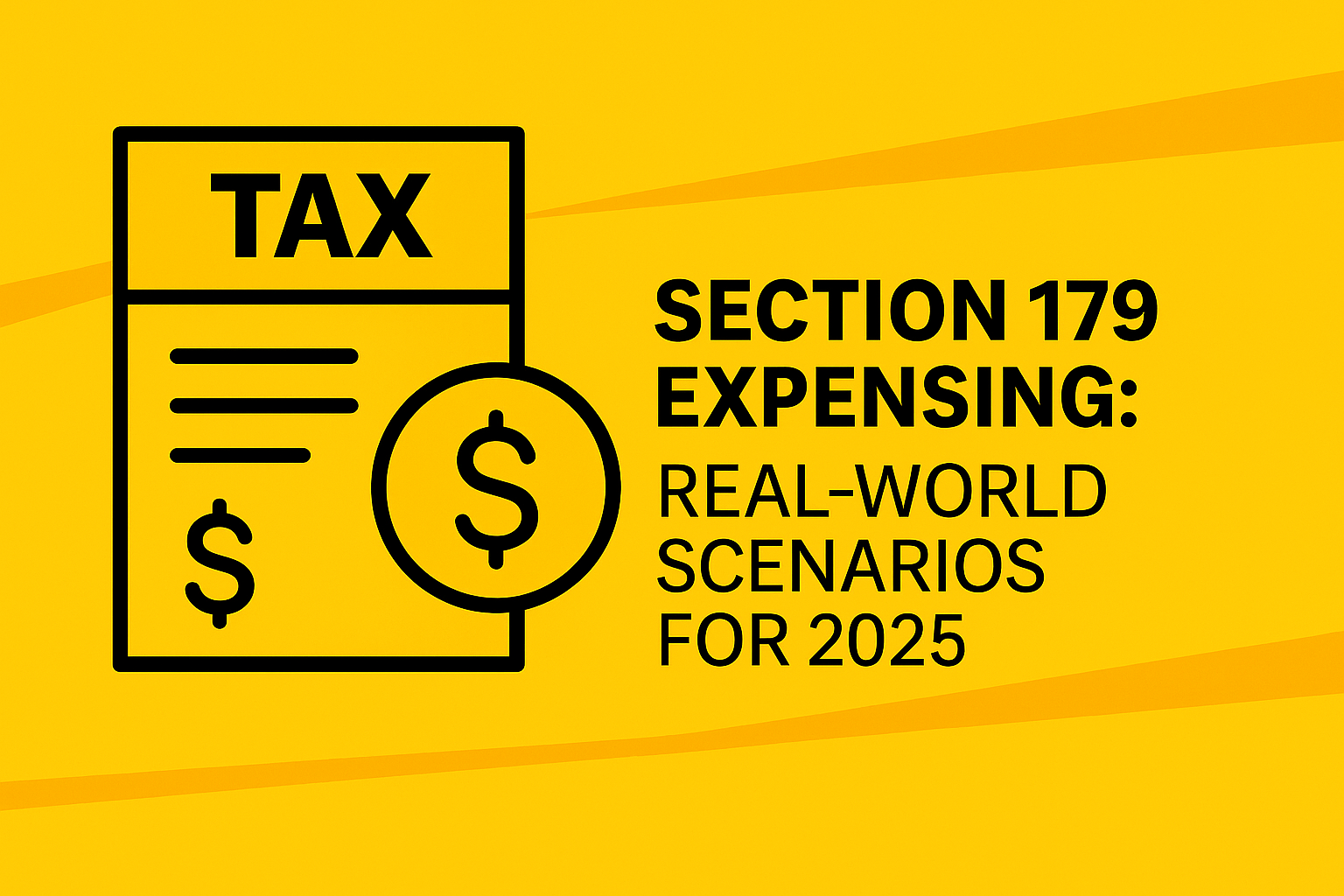Section 179 expensing remains one of the most powerful immediate tax relief tools for small businesses—especially under the new One Big Beautiful Bill Act (OBBBA). This post provides clear, practical examples showing how main street retailers, construction firms, tech startups, and service businesses can leverage Section 179 to maximize cash flow and reduce their tax bill. See how your clients can benefit, what the limits are, and how to use bonus depreciation for any excess. Explore these real-world scenarios and learn how an AI tax tool or AI tax planning software can optimize these decisions for your firm.
Ready to save clients thousands with smarter AI tax research and planning? Try our Agentic AI tax tool today!
Section 179 Expensing: Real-World Scenarios for 2025
1. Main Street Retailer – Moderate Equipment Purchases
Scenario: A small bakery (sole proprietor) purchases $100,000 of new ovens and mixers in 2025, all used 100% for the business.
- Section 179 Advantage: Under OBBBA, the full $100,000 qualifies for first-year expensing (since $100K < $2.5M limit)1.
- Tax Savings: If the owner is in the 30% bracket, that’s a $30,000 federal tax cut in 2025.
- Without Section 179: Depreciation would spread savings over 5–7 years—about $6,000 per year—instead of the immediate $30K benefit2.
- How to Claim: File Form 4562, elect $100K Section 179, and reduce taxable income for 2025. Any unused deduction can be carried forward.
2. Construction LLC – Large Equipment Purchase
Scenario: A construction LLC buys $3,500,000 of new heavy equipment.
- Section 179 Cap: OBBBA sets the 2025 Section 179 cap at $2.5M, with phase-out starting at $4M3.
- Application: Full $2.5M Section 179 expensing is allowed. The next $1.0M is fully deducted via 100% bonus depreciation4.
- Tax Impact: At a 24% corporate rate, first-year tax savings reach $840,000.
- Note: If total purchases had exceeded $6.5M, Section 179 would be completely phased out for the excess.
3. Tech Startup – Phase-Out Example
Scenario: A startup invests $5,000,000 in computers and servers.
- Phase-Out Math: Purchases over $4M reduce the $2.5M Section 179 cap dollar-for-dollar. $5M – $4M = $1M reduction; thus, only $1.5M Section 179 deduction is allowed.
- Bonus Depreciation: The remaining $3.5M qualifies for 100% bonus depreciation.
- Result: The startup writes off all $5M in 2025, improving cash flow—a key benefit for growing firms. Any unused Section 179 deduction (if the startup is not profitable) can carry forward.
4. Service Business – Income Limit
Scenario: A marketing consultant earns $150,000 in 2025 and buys $200,000 in computers.
- Section 179 Income Limit: The deduction cannot exceed business profit; only $150,000 of the $200,000 can be expensed in 2025[4].
- Treatment of Excess: The remaining $50,000 is depreciated over several years or can use bonus depreciation.
- Planning Point: Any Section 179 deduction over business income carries forward to future profitable years.
5. Mixed-Use Property – Ineligible Asset
Scenario: A clinic buys a new building for $500,000.
- Section 179 Limitation: Real estate (buildings/land) is not eligible for Section 179. The clinic must depreciate the building under normal rules.
- Furniture Exception: If the clinic also bought $50,000 in new office furniture, that amount would be eligible for Section 179.
Key Takeaways: Section 179 Expensing Under OBBBA
These examples underscore the dramatic impact Section 179 and bonus depreciation can have on a small business’s taxable income and immediate cash flow:
- Immediate Expensing: Deduct up to $2.5M of qualified property per year, with the ability to bonus-depreciate any excess.
- Income and Asset Limits: Be aware of both the $2.5M cap (and $4M phase-out threshold) and the rule that deductions cannot exceed taxable income.
- Eligible Property: Most tangible business property (machinery, equipment, software, furniture), but not real estate or land, qualifies.
Pro tip: AI tax research and agentic AI tax planning tools can help identify and optimize Section 179 opportunities for every client scenario—saving time and ensuring compliance.
Ready to Unlock the Power of Section 179 and OBBBA for Your Clients?
Don’t leave money on the table—see how Hive Tax AI’s agentic AI tax research and AI tax planning tools can instantly analyze client data and maximize Section 179 deductions.
Try our AI tax tool today or book a free demo and see how you can serve your clients with confidence, accuracy, and speed.

